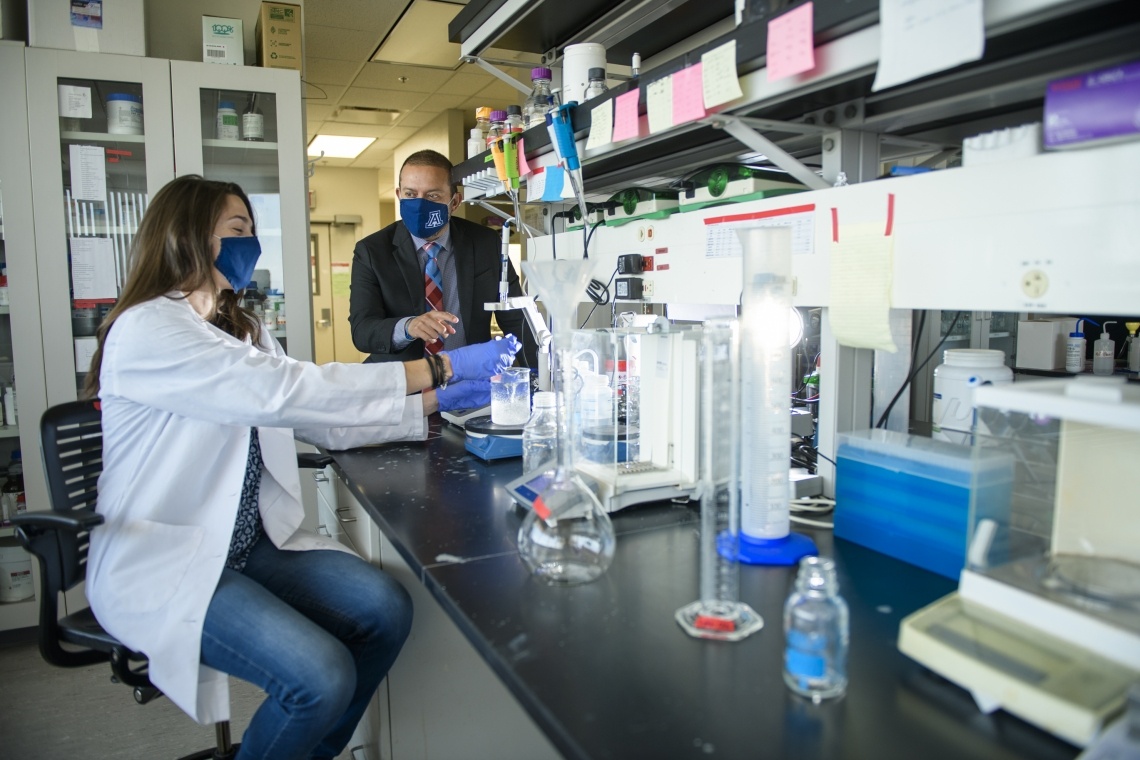
COVID-19 inhibits the mechanisms of pain: an Arizona University study explains the asymptomatic
COVID-19, why do Covid-19 positive subjects remain asymptomatic for such a long period before they experience the characteristic discomfort and pain? This is the question that Rajesh Khanna, PhD, professor at Arizona College of Medicine – Department of Pharmacology in Tucson, asked himself and wanted to answer.
This study “The SARS-CoV-2 Spike protein co-opts the VEGF-A/Neuropilin-1 receptor signaling to induce analgesia” was recently published in PAIN, the journal of the International Association for the Study of Pain.
The importance of the discovery by the Arizona University researcher is remarkable: it shows why people infected with COVID-19 can live a fairly long time before experiencing those symptoms that then induce treatment.
Pain Relief Caused by SARS-CoV-2 Infection May Help Explain COVID-19 Spread
This “unawareness” has two direct effects, the former on the person and the latter on the community.
The first one, on the Covid+ person, is a late diagnosis and the use of treatment when the coronavirus has invaded the human system (the respiratory system on all) so much that in many cases it cannot be contained.
The second one, on the community, is that the coronavirus positive subject, not feeling on himself symptoms of contagion, circulates freely among people, spreading the Covid.
“It made a lot of sense to me that perhaps the reason for the unrelenting spread of COVID-19 is that in the early stages, you’re walking around all fine as if nothing is wrong because your pain has been suppressed,” Khanna said.
“You have the virus, but you don’t feel bad because your pain is gone. If we can prove that this pain relief is what is causing COVID-19 to spread further, that’s of enormous value.”
COVID-19 inhibits pain. How does this happen?
Viruses normally infect host cells through protein receptors on cell membranes.
Since the beginning of the pandemic, scientists have determined that the SARS-CoV-2 spike protein uses the angiotensin 2 conversion enzyme receptor (ACE2) to penetrate the body.
But in June, two papers published on the bioRxiv prepress server indicated neuropilin-1 as the second receptor for SARS-CoV-2.
Many biological pathways signal the body to feel pain.
One is through a protein called vascular endothelial growth factor A (VEGF-A), which plays an essential role in blood vessel growth, but which has also been linked to diseases such as cancer, rheumatoid arthritis, and, more recently, the COVID-19.
Like a key in a lock, when VEGF-A binds to the neuropylin receptor, a cascade of events begins that leads to the hyperexcitability of neurons, and this causes pain.
Dr. Khanna and his research team have discovered that the SARS-CoV-2 peak protein binds to the neuropilin in the same position as VEGF-A.
With this knowledge, they carried out a series of laboratory experiments on rodents to test their hypothesis that the SARS-CoV-2 peak protein acts on the pain pathway VEGF-A/neuropilin.
Before they used VEGF-A as a trigger to induce the excitability of neurons, which creates pain, then they added the SARS-CoV-2 spike protein.
“The spike protein completely reversed the VEGF-induced pain signaling,” Khanna said. “It didn’t matter if we used very high doses of spike or extremely low doses – it reversed the pain completely.”
Dr. Khanna is collaborating with immunologists and virologists at UArizona Health Sciences to continue research on the role of neuropilin in COVID-19’ spread.
“We are continuing the design of small molecules against neuropilin, particularly natural compounds, which could be important for pain relief,” said Dr. Khanna.
The paper, “SARS-CoV-2 Spike protein co-opts VEGF-A/Neuropilin-1 receptor signaling to induce analgesia,” on PAIN:
SARS_CoV_2_Spike_protein_co_opts.98244
Co-authors on the paper from the Department of Pharmacology are: Aubin Moutal, Lisa Boinon, Kimberly Gomez, Dongzhi Ran, Yuan Zhou, Harrison Stratton, Song Cai, Shizhen Luo, Kerry Beth Gonzalez, and Samantha Perez-Miller. Co-authors from the Department of Anesthesiology, with additional affiliations with the Comprehensive Pain and Addiction Center, are Dr. Amol Patwardhan, and Dr. Mohab Ibrahim.


